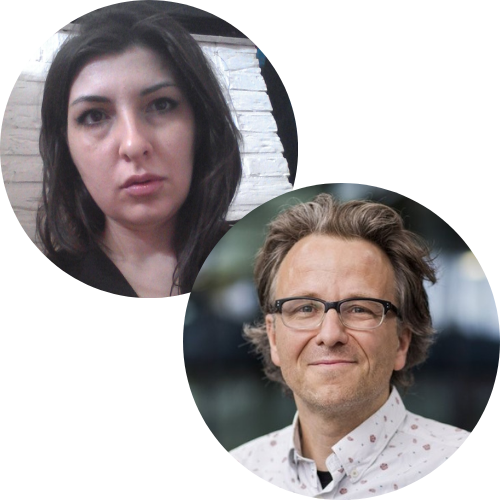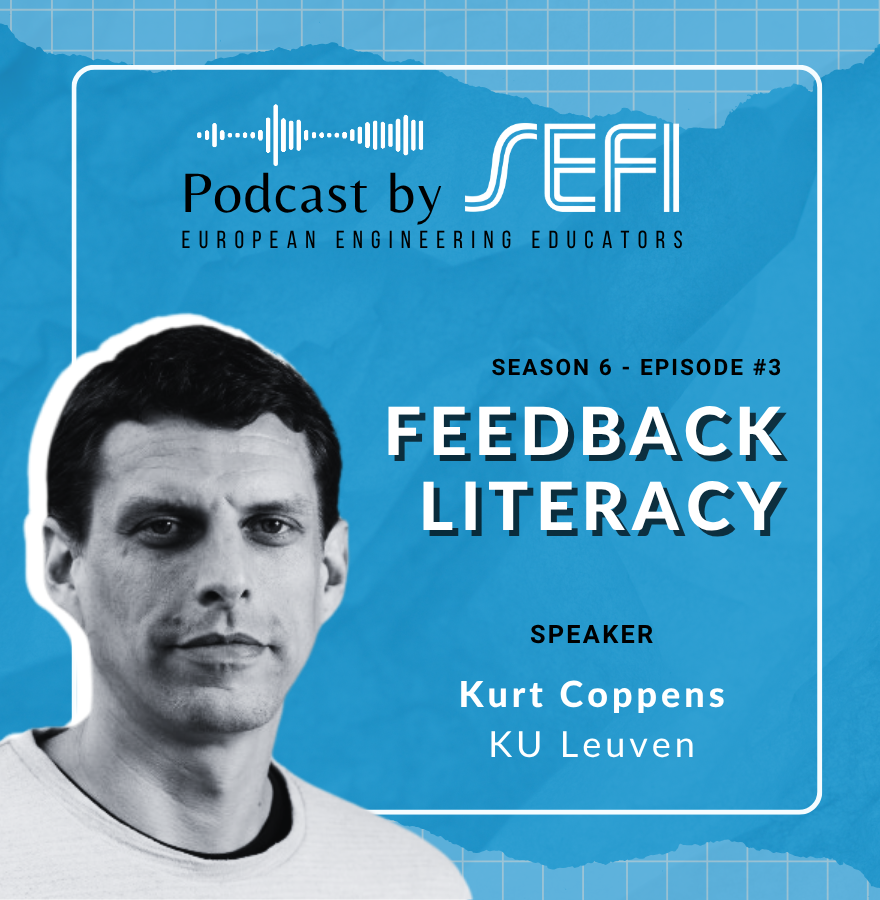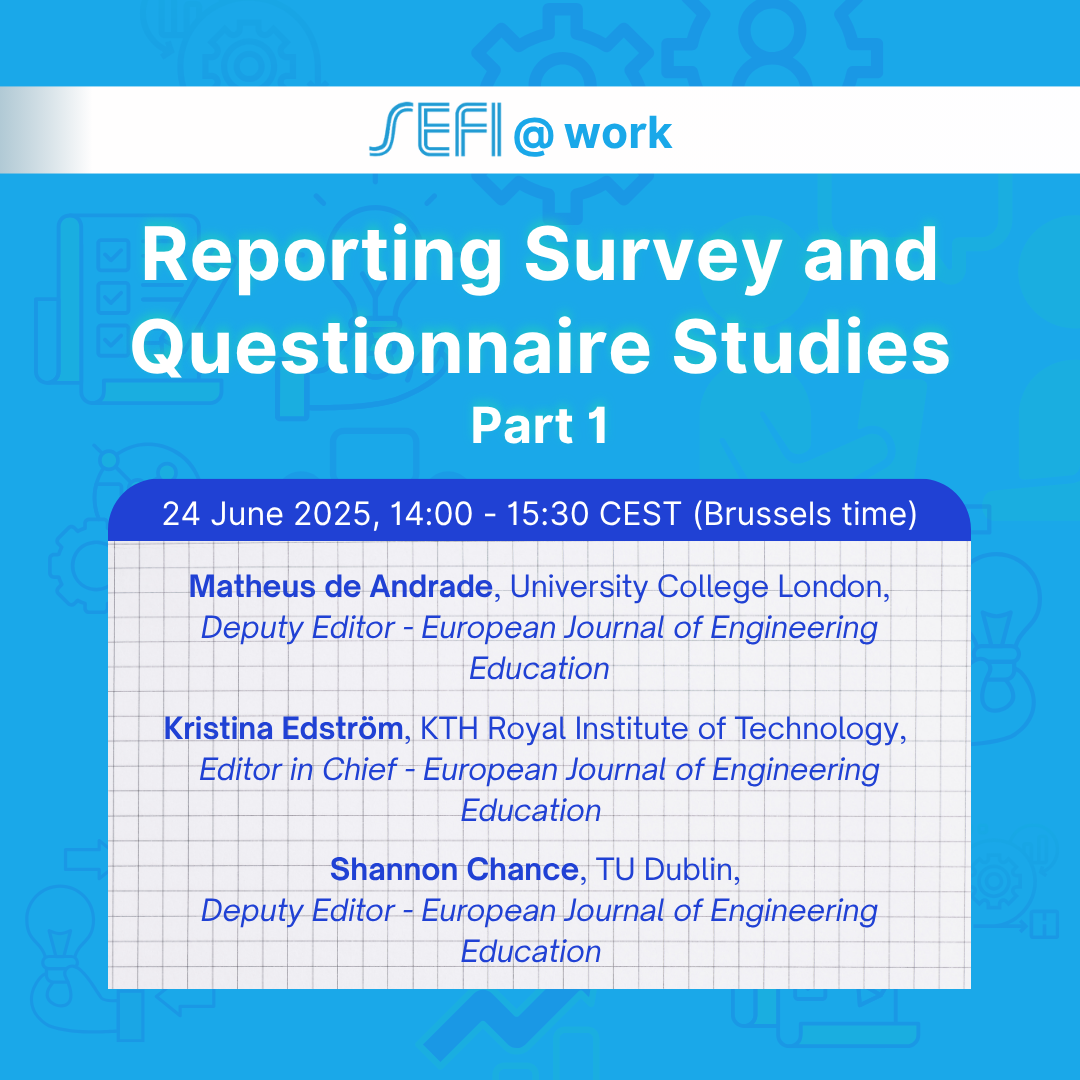Feedback is a somewhat perennial topic within higher education (HE), with increasing emphasis on students…
Dear Reader,
The medium is the message, also in Engineering Ethics Education. This newsletter focuses on formats that touch students at a personal level needed to have good ethics education. It reports on the “Film and fiction in engineering ethics education” workshops and the SEFI Ethics SIG spring school.
The medium is the massage, also in Engineering Ethics Education

In 1964, Marshall McLuhan wrote that “The medium is the message”. He stressed the difference of ‘content’ and ‘character/style’ in communication, and the importance of character or how the communication is done for the associated action. This is obvious when trying to sell a soft drink: a 20 second video with “some socially-considered-ideal-size-people showing joy while being refreshed” is more convincing to buy the product than a 10000 words in-depth analysis.
We think the same applies for your engineering ethics lectures. The content is important but the way the content it brought to the students has enormous influence on the effect of the teaching. As Diana Bairaktarova and Tom Staley (Virginia Tech, US) mention, different educational contexts provide diverse opportunities for students to develop ethical perspectives.
The first approach here is to start from the objectives you want to realise and choose an appropriate method. For sure, the previous newsletter on the use of cases in engineering ethics education is an example hereof. But other methods might be even more touching and moving. Thomas Lennerfors (Uppsala University, Sweden), for example, indicates that using films and the “suture”-concept in engineering ethics education support students taking fundamentally other perspectives than their own. Sarah Hitt (New Model Institute for Technology and Engineering, UK) uses short fiction to elicit several important messages in her ethics class. Cat Kutay (Charles Darwin University, Australia) wants to start from moral imperatives in the working contexts in which engineering knowledge is used. Rationalising about this does not work, she pictures engineering stories in her class and parallels these with Aboriginal stories as they too emulate moral imperatives. Finding the right communication requires engineering ethics teachers to also align the content and type of communication to the type of students. Diana Martin (TU Eindhoven, the Netherlands) points at a particular aspect of the current engineering student cohorts, that of “Sustainable natives” and how expectations of students are shifting towards more sustainability. All this is far from easy, so offering structured overviews of mediums and messages is crucial. One such initiative is the Online Ethics Center directed by Rosalyn W. Berne (University of Virginia, the US). These are but a few examples how the educational redesigns are crucial in reaching the learning goals that probably the most important for you as teacher.
Sometimes, however, you as a teacher are less in the lead of choosing your method. The rupture to online-education due to Covid-measures is probably the most important example nowadays. We are probably only in the beginning of understanding the consequences of the ‘character’ of the types of online communication we are provide to-the-best-of-our-abilities. For sure, many questions arise. Lavinia Marin (TU Delft, the Netherlands) analyses what we have lost and gained with lecturing online for the engineering ethics classes. Pieter de Vries (TU Delft, the Netherlands) asks the same questions looking at the ethical dimensions of educational technologies more broadly. Of course, as most engineering ethicists will agree upon, new technologies also offer new opportunities. Roland Tormey and Martin Boyer (EPFL, Switzerland) report on using “writing Wikipedia pages” in class. Their conclusion is that Wikipedia is both techno-ethical marvel and a conundrum. You can use it in your ethics class to try and change a Wikipedia page and reflect on ethical aspects of knowledge creation and communication.
All the above examples clearly show the crucial importance of the pedagogical formats of engineering education in general, and engineering ethics education in particular. It links further to the accreditation debate in earlier newsletters “Accreditation is ethics in action” that the most important lessons learned via the pedagogical methods can (often) not be measured and therefore are far less present in accreditation requirements.
In 1967, Marshall McLuhan wrote another book: “The Medium Is the Massage: An Inventory of Effects”. Although there is debate on whether the “a” as second letter in the title was a printing error, it certainly added to the impact of the book, as discussion about printing error are also a style with its strength. We are convinced most engineering ethics teachers want to convey students morally important messages. Having impact here means “massaging” students minds. It will be an ongoing discussion which massages work best in which contexts.
—
Alongside the contributions, you can find our usual input on upcoming events and recently published articles on Engineering Ethics Education.
We wish you a good read, and hope you will react to the opinions expressed or share with us how you teach ethics on Twitter by using #SEFIethics
All, keep up the good work!
Gunter Bombaerts (TU Eindhoven, the Netherlands) and Diana Martin (TU Eindhoven, the Netherlands)

